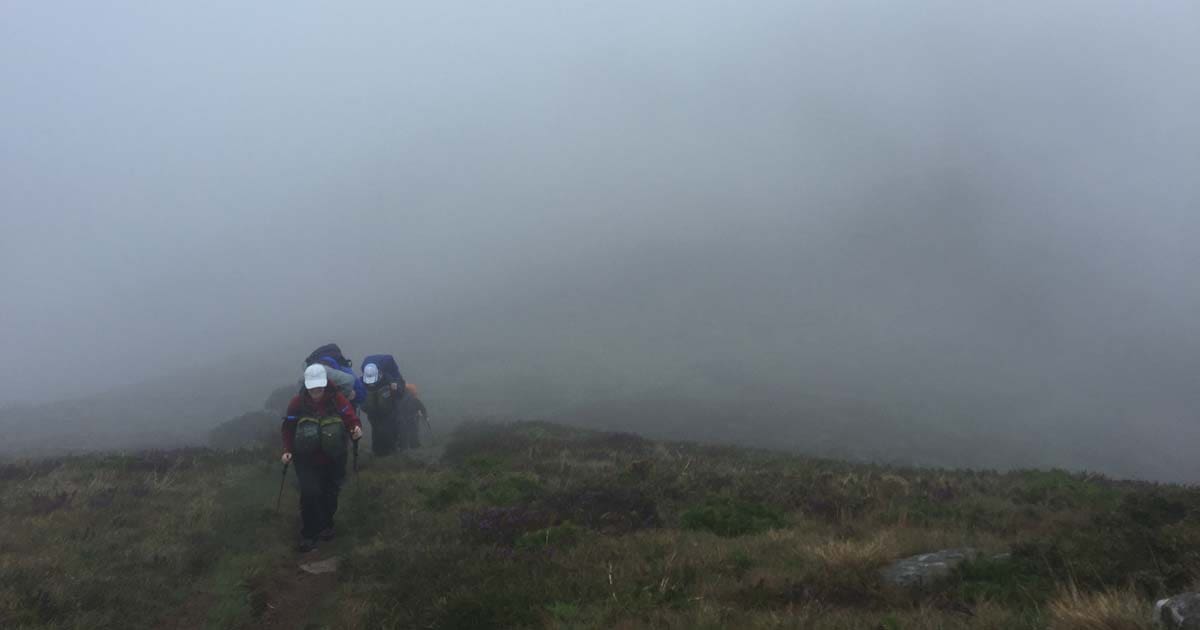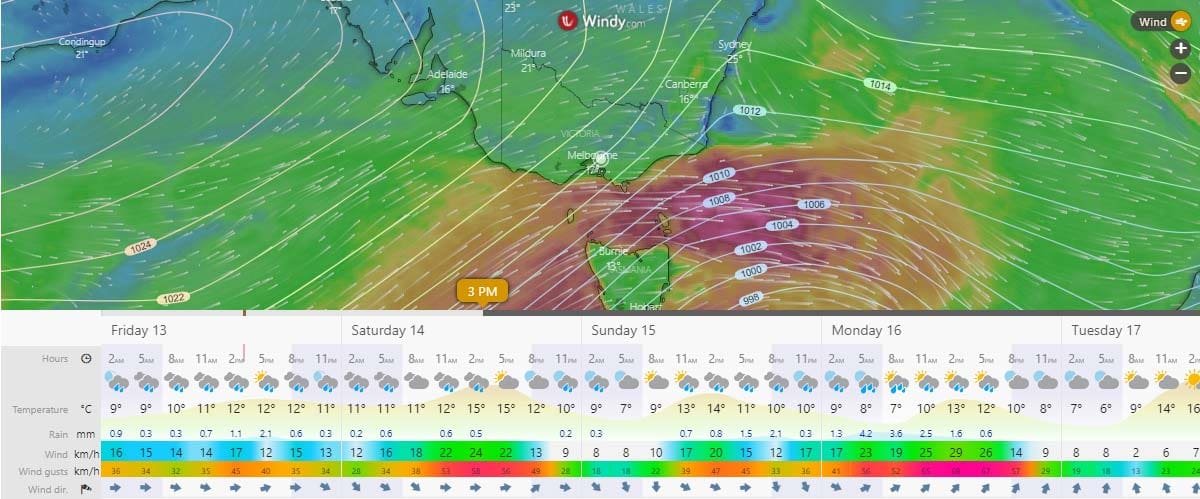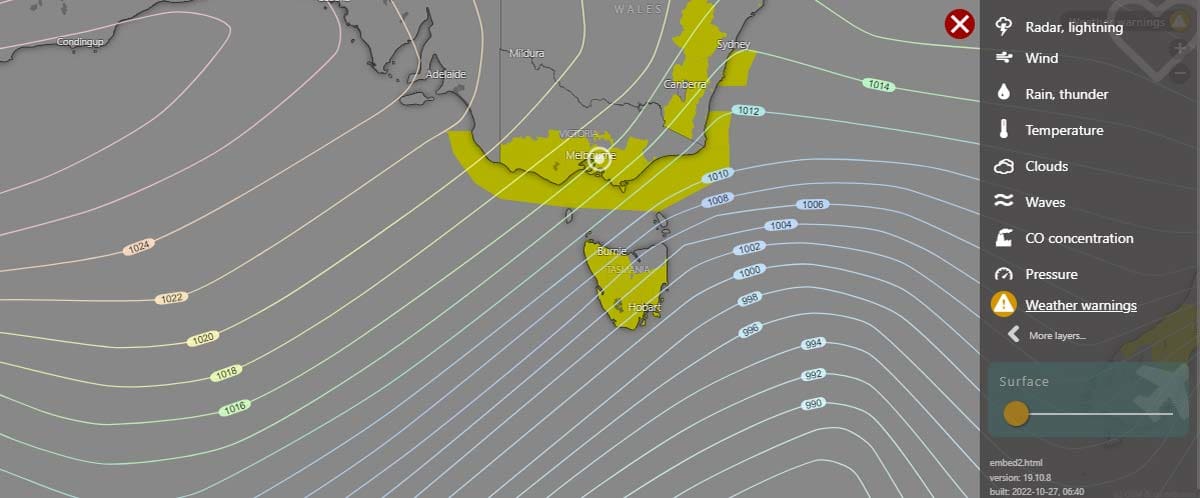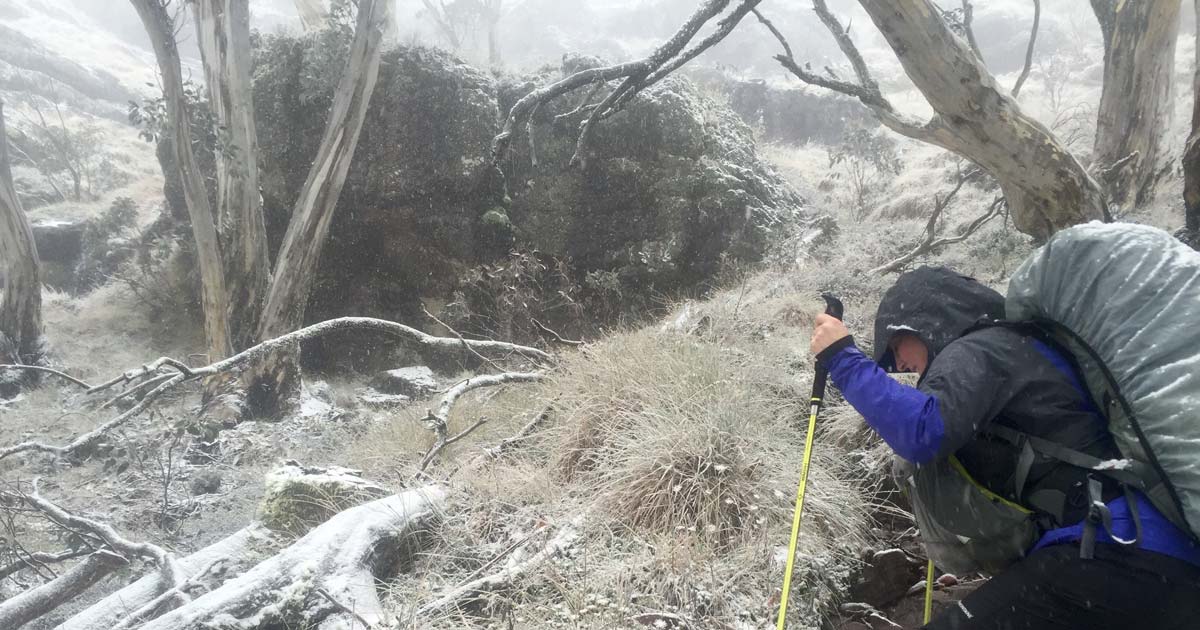Weather based guide for land-based outdoor adventure activities
Weather is essential for the safety, comfort, and enjoyment of outdoor adventure activities. Organisers should know where to get weather information and understand what it means to safely plan and manage their activity. This guide provides tips on how to get weather information, and a quick guide to weather hazards and warnings relevant to land-based outdoor adventure activities (such as hiking, bushwalking and camping).
Getting weather information for your activity

1. Pick your date
Find out about the climate of your location. While weather can vary significantly from one year to the next, consider which months are typically hot, cold, wet, dry, windy, sunny or cloudy. Visit www.bom.gov.au/climate for maps of average conditions and more detailed climate data by location. Plan for all conditions year-round.
2. Know where to get weather information before your activity
- Familiarise yourself with the Bureau of Meteorology website (bom.gov.au). You can also download the BOM Weather app.
- Know where to find weather warnings (bom.gov.au/australia/warnings) and understand the type and severity of weather phenomena covered by these warnings (www.bom.gov.au/weather-services).
- Learn how to use MetEye (bom.gov.au/meteye). MetEye provides detailed (three-hourly) weather forecasts for all of Australia for seven days ahead. Search for postcodes, towns, or use latitude and longitude for remote locations.
- If you will need weather observations during your activity, identify your closest Automatic Weather Station and/or rain radar. You can find this via your state/territory page (e.g. bom.gov.au/tas/observations) or the BOM Weather app.
- You can check the local weather on any trail on this site by scrolling to the weather section on each trail details page.

3. Start checking the forecast (up to one week before)
Check the weather forecast and review it regularly as your activity date approaches. Forecasts are updated at least twice per day, becoming more accurate as the date approaches. Remember that some ‘patchy’ weather phenomena (such as thunderstorms and rain) are localised and it can be more difficult to predict their timing and location than widespread phenomena (such as heatwaves).
- Watch for mentions of weather hazards (such as thunderstorms or strong winds) in forecasts and warnings. While forecasts are available up to seven days before, warnings can be issued days or hours ahead when there is greater certainty about the areas impacted.
- Watch for particularly cold or hot temperatures in the forecast. The Bureau has a Heatwave Service between November and March, showing when heatwave conditions are expected: www.bom.gov.au/australia/heatwave
- Be aware of river conditions and the potential for flooding: www.bom.gov.au/australia/flood
- Get the latest information from your state or territory Fire Service including fire danger ratings, total fire bans, and hazard reduction burns.
- Check the UV Index in your weather forecast and plan to use sun protection when it’s 3 and above.

4. Keep an eye on the weather during your activity
- Check the Bureau’s website or BOM Weather app, listen to the radio, and pay attention to weather information from emergency services and park managers.
- Pay special attention to any weather, flood, or other warnings issued, and take action as needed.
- Watch for approaching weather (e.g. cumulonimbus, or thunderstorm, clouds). Conditions can deteriorate quickly, particularly in the mountains and other locations where you can’t see the horizon.
- Consider the ‘apparent’ (feels like) temperature as an indicator of the thermal comfort of participants.

Quick guide: Weather hazards
| Hazard | Potential impacts |
|---|---|
| Cold temperatures | Hypothermia, particularly when combined with wind (wind chill). Ice may form on tracks, roads, and equipment, making their use difficult. |
| Fire weather and bushfires | Injury or death from the fire or its radiant heat. Respiratory problems from smoke. Destruction of infrastructure and equipment (such as huts and tents). |
| Fog and low cloud | Reduced visibility of reference points makes navigation difficult. White-out conditions and disorientation can occur when combined with a snowy landscape. |
| Heavy rain and flooding | Water levels in creeks, rivers, and canyons can rise quickly. Areas may become inaccessible, or equipment washed away. Slippery terrain increases accident risk. |
| Heavy snow or blizzards | Reduced visibility of paths, signs, and hazards makes navigation difficult. Increased risk of hypothermia. Deeper snow is physically taxing to walk through. |
| High temperatures and heatwaves | Heat exhaustion and dehydration, especially when undertaking physical activity. High night-time temperatures makes it difficult to recover from heat exhaustion. |
| Strong wind and gusts | Falling trees or limbs may cause injury or death. Damage to infrastructure and equipment. Progress may be slowed when walking against the wind. Increased wind chill. |
| Thunderstorms | Injury or death from being struck by lightning (particularly at high points and exposed places); debris, injury, or damage from wind, large hailstones, or flash flooding. |
| Tropical cyclones | Injury or death from destructive winds, heavy rainfall, and storm surge. Widespread disruption and damage to infrastructure. |
| UV radiation | Sunburn, and longer-term eye damage, premature ageing, and skin cancers. |
Quick guide: National weather warnings relevant to land-based activities
| Warning type | Issued for… |
|---|---|
| Severe Thunderstorm Warning | Severe thunderstorms that produce: large hail (2cm in diameter or larger), damaging wind gusts (generally wind gusts exceeding 90 km/h), heavy rainfall, and/or tornadoes. |
| Severe Weather Warning | Sustained winds of gale force (63 km/h) or more, wind gusts of 90 km/h or more (100 km/h or more in Tasmania), very heavy rain, abnormally high tides, unusually large surf waves, and/or widespread blizzards. |
| Flood Watch / Warning | Early advice of potential riverine flooding (Watch) and when flooding is occurring or expected to occur (Warning). |
| Fire Weather Warning | Weather conditions conducive to the spread of dangerous bushfires. |
| Tropical Cyclone Watch / Warning | A tropical cyclone affecting or expected to affect communities within 48 hours (Watch) or 24 hours (Warning). |
Key points to remember
- Outdoor adventure activities are very susceptible to the weather—use caution all year round.
- Always check the weather forecast before starting your activity.
- Keep watch on the weather while you’re out, as conditions can deteriorate quickly.
Information courtesy of the Bureau of Meteorology (Australian Government). Trail Hiking Australia (AKA Darren Edwards) is not in any way liable for losses, damages, costs, expenses and liability of any kind that you or any other person may suffer or incur directly or indirectly from you using this information or material available from it.












Just go
Oh that’s super handy. Thanks for sharing.
I don’t generally let the weather stop me from going hiking but I do use it as a guide to know where to go hiking. If there’s been a lot of rain and more is forecast, I’ll avoid hikes with rivers that I’ll need to cross. Windy days, I’ll try to avoid areas that have a lot of large trees, particularly if it’s been wet when they are more likely to fall. I’ve had some amazing hikes in bad weather.